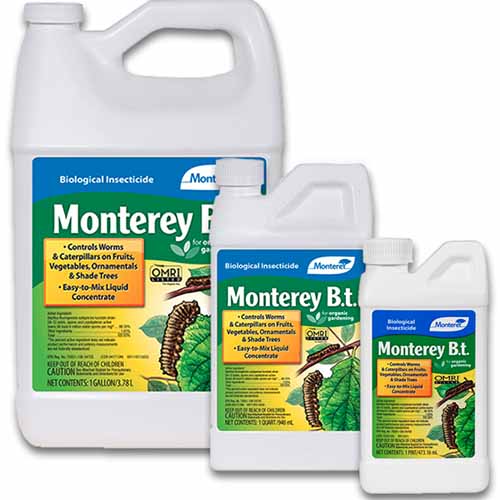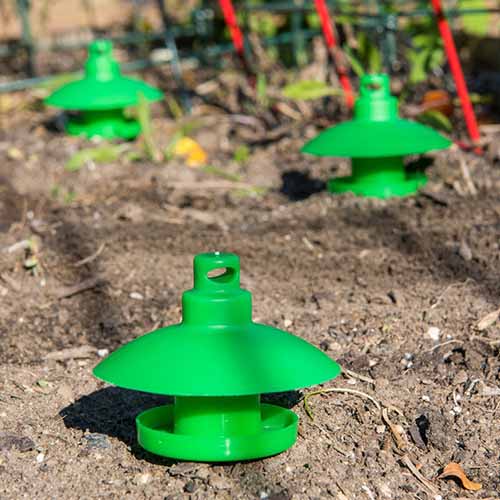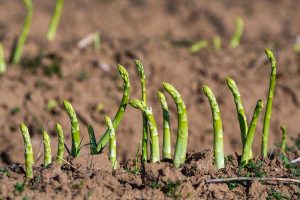Question: what do potstickers, spring rolls, and stir-fries all have in common?
Answer: they all taste even better with the addition of bok choy.
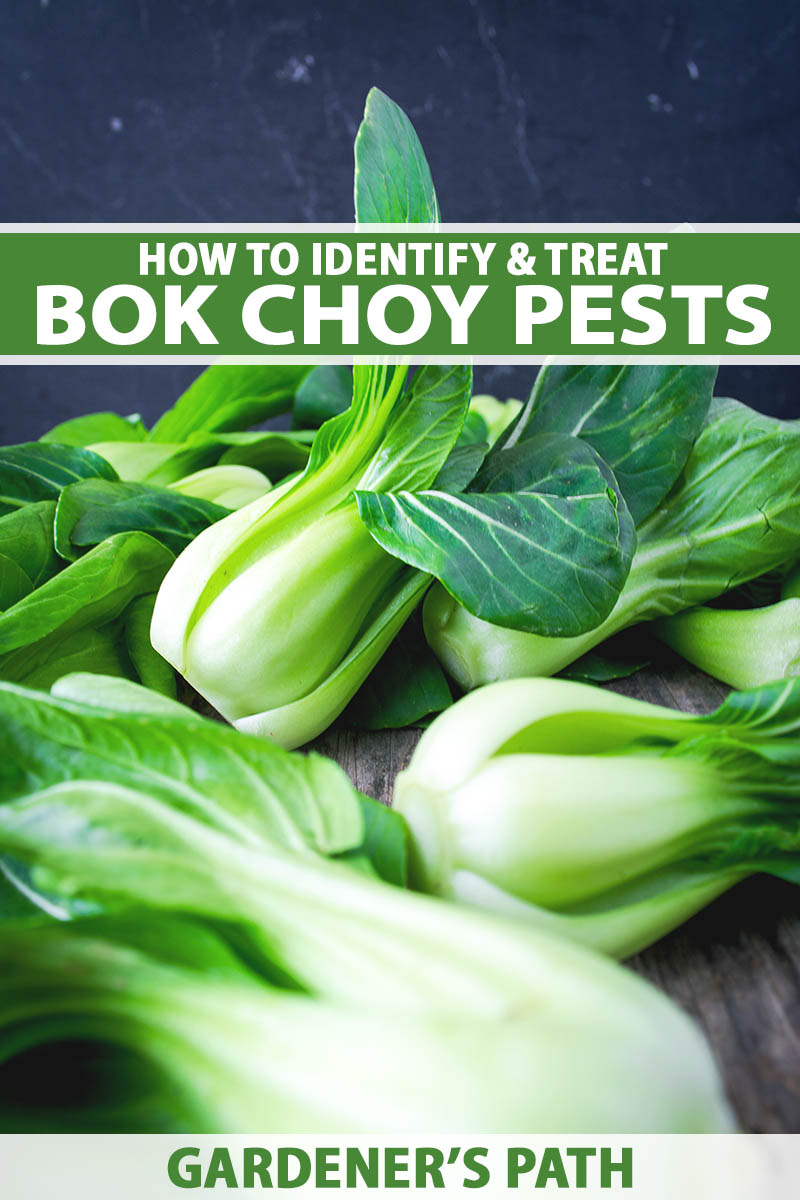
We link to vendors to help you find relevant products. If you buy from one of our links, we may earn a commission.
Brassica rapa subsp. chinensis – also known as bok choy, pak choi, or Chinese cabbage – is a green-leafed and white-stalked member of the Brassicaceae family that’s well-known for its earthy and peppery taste.
You can learn more about how to grow bok choy in our guide.
An essential vegetable in many types of Asian cuisine, bok choy is unfortunately susceptible to a variety of pests, all of which can leave your planned ramen meal lacking texture.
The sudden arrival of pests may seem like an inescapable crisis. But luckily, infestations can be avoided and combated with the proper knowledge.
In this guide, we’ll cover nine of the most common and harmful pests that may afflict bok choy, and explain how to identify, prevent, and control them.
If bok choy pest management is a war, then this article is the intelligence briefing. But don’t stress about losing battles – it’s all a part of the process.
Make like Sun Tzu and know your enemies:
Identify and Control 9 Common Bok Choy Pests
Proper cultivation and using sanitary gardening practices will help keep your bok choy at peak health, which goes a long way in preventing pest infestations.
Many insects are also vectors for pathogens, so managing pests will also help to manage disease spread – two birds with one stone!
1. Aphids
Reaching mature lengths of one-sixteenth to one-eighth of an inch, these soft-bodied insects use sucking mouthparts to feed on the sap within leaf tissues.
Small populations of aphids aren’t a huge issue, but larger infestations can cause stunted growth, wilting, and structural damage associated with feeding.
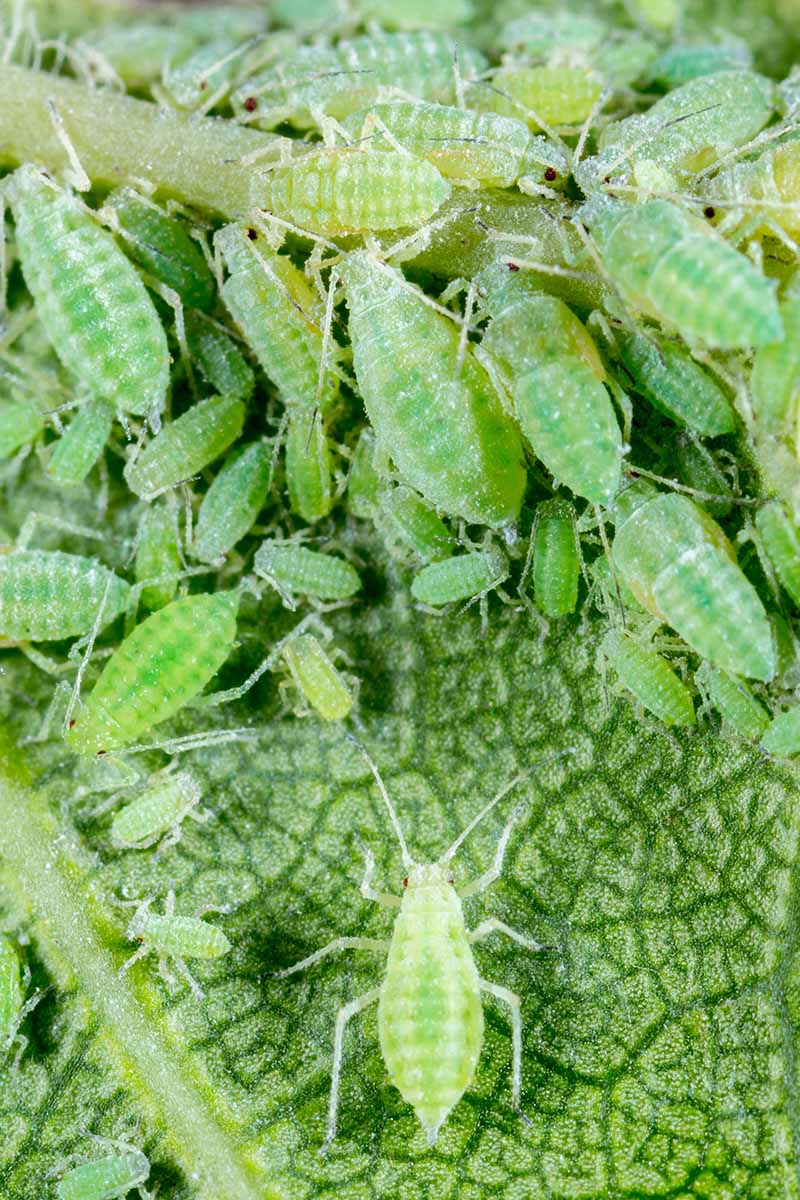
Additionally, aphids excrete honeydew as they feed, which may lead to further damage. Honeydew often attracts ants, and can also result in sooty mold: an unsightly coating of black, soot-like fungal powder.
Physically, you can knock the insects off of your plants with strong blasts of water from the hose. Applications of horticultural oil or insecticidal soap will smother aphids without leaving any toxic residues behind.
Alternatively, predatory insects such as lacewings and ladybugs are adept at consuming aphids, so their addition to your garden would be a wise choice.
Check out Arbico Organics to find predatory insects that feed on aphids.
A more in-depth guide to aphid control can be found here.
2. Cabbage Loopers
Trichoplusia ni is a species belonging to the order Lepidoptera, and these can cause serious issues for cruciferous plants such as bok choy.
While the adult cabbage looper moth doesn’t pose a threat, the juvenile larvae can completely defoliate a bok choy plant.

These greenish caterpillars are smooth, marked with thin lines of white running down their backs, and they move in a “looping” motion, hence the name.
As they feed, they leave behind irregularly-shaped holes in the leaves, which end up stunting growth. Another sign of their presence is their greenish-brown excrement or frass, which accumulates at the leaf bases.
After three to four weeks of feeding, the larvae overwinter in cocoons on nearby plant detritus and emerge as moths in spring.
The gray adult moths lay pale yellow to green eggs on leaf surfaces in spring, either singly or in groups of up to seven eggs. These hatch in a matter of days, and the cycle continues.
Cloth row covers can be used to prevent the adult moths from laying eggs, and disposing of fallen plant debris eliminates overwintering sites. If you see just a few of the larvae, these can easily be removed by hand.
Removing and disposing of adjacent weeds and plant detritus will help to eliminate any nearby overwintering sites. Applications of insecticidal soap or sprays of Bt will help to control infestations.
For some Bacillus thuringiensis subsp. kurstaki that’s quite effective against cabbage looper larvae, Arbico Organics sells it in various volumes as a liquid concentrate.
Make sure to follow any and all application instructions.
Read more about managing these pests in our guide.
3. Cabbage Worms
Although “cabbage worm” sounds similar to “cabbage looper,” they’re not the same insect. Cabbage worms, also known as Pieris rapae, are velvety green with yellow stripes that transform into white butterflies.
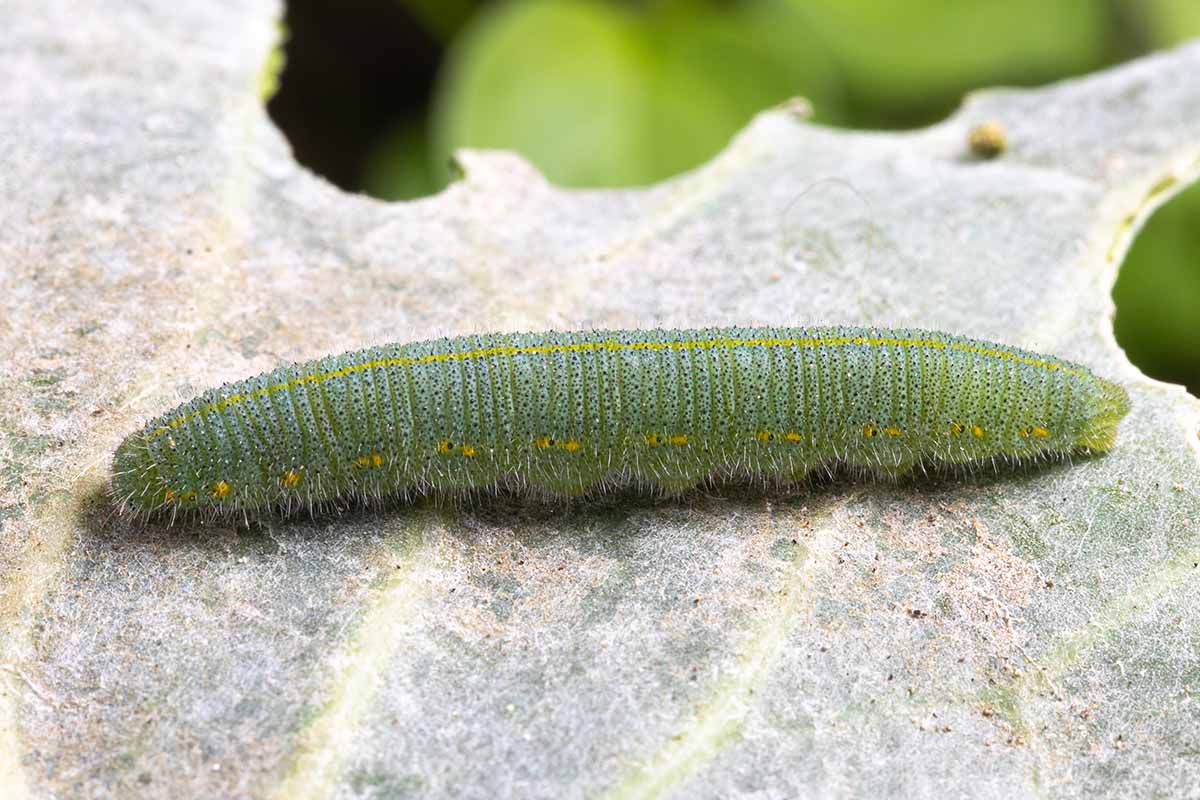
In mid-spring, these butterflies lay white eggs – which later turn yellow – individually on outer leaf undersides, and the larvae that hatch out consume the leaves of cruciferous plants such as bok choy.
Feeding can leave the foliage riddled with more holes than a used archery target made of Swiss cheese. Additionally, the feces (or frass) the larvae excrete after all that munching can leave your bok choy stained.
Said holes and frass are the top signs of cabbage worms if you don’t spot the pests themselves.
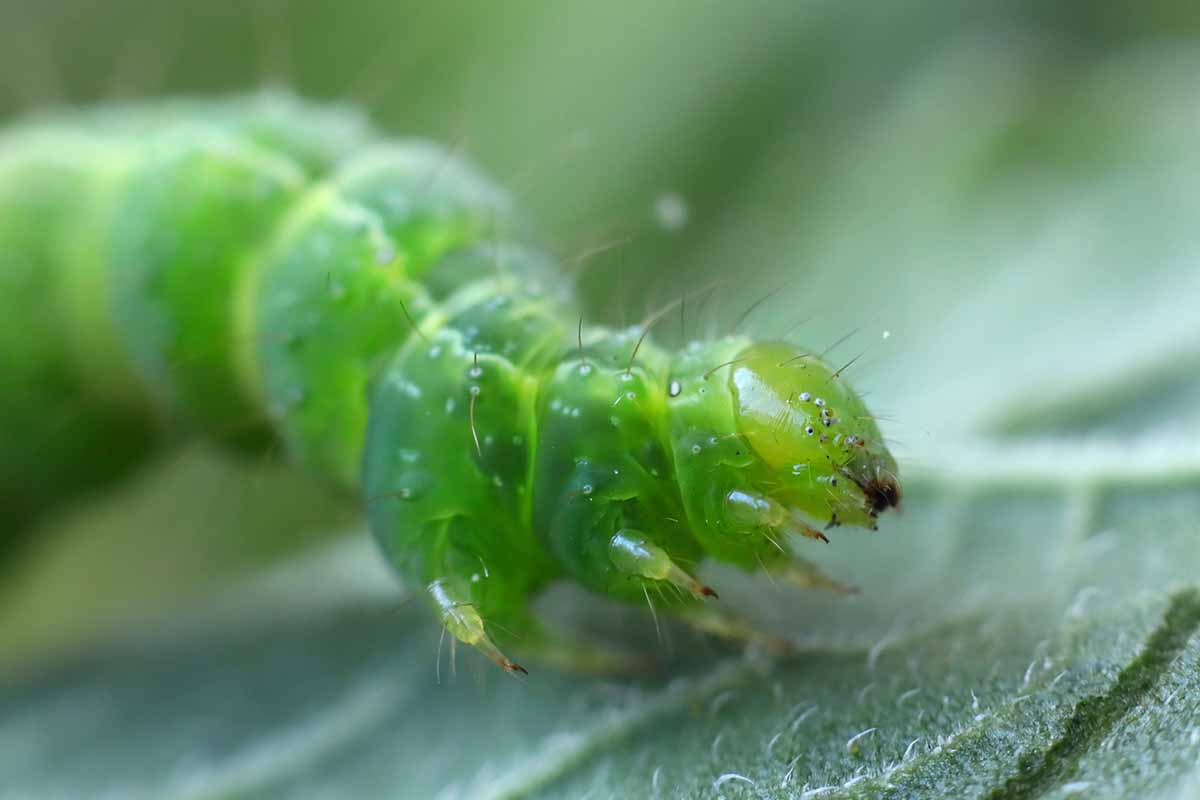
Once you realize that you’ve got an infestation on your hands, removing the eggs by hand and spraying infested leaves with Btk every one to two weeks will help control these pests.
Old-timey methods such as sprinkling leaves with cornmeal and rye flour may dehydrate and kill cabbage worms, if you want to give it a try.
Row covers applied early in the season will prevent egg-laying, while companion planting with thyme can help to repel cabbage worms.
Nearby mustard plants can also help to draw the pests away from your bok choy as a trap crop, and these can be destroyed once the mustard is overrun with cabbage worms.

For an ultra-fine mesh netting that’s sold in 10-by-10-foot or eight-by-24-foot dimensions, the FARER Store offers such a product on Amazon.
Read more about ridding your Brassicas of cabbage worms in our guide.
4. Cutworms
Typically from the Noctuidae family of moths, cutworms are moth larvae that hide under the soil, coming out only at night to feed.
These subterranean pests are identifiable by their gray, smooth, and greasy skin, along with the “C” shape that they curl into when spooked.
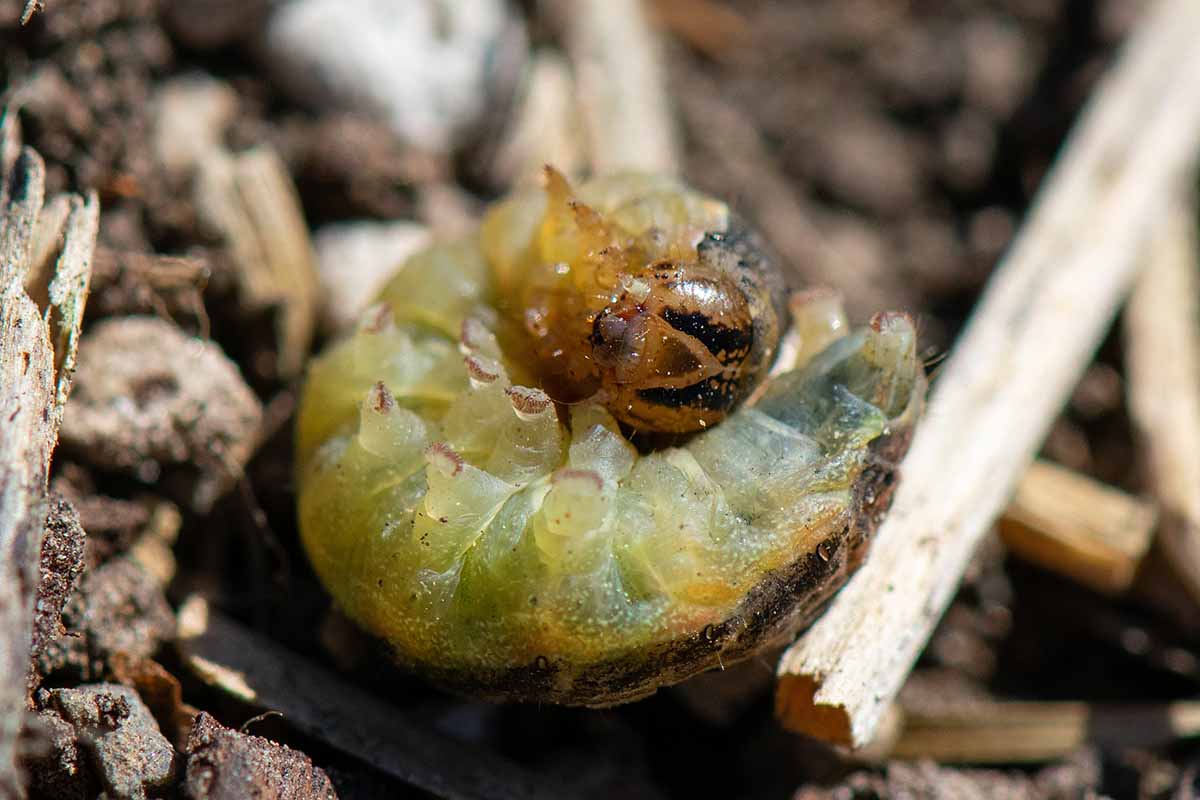
In spring, they emerge from white-to-yellow eggs that turn brown just prior to hatching, laid on nearby host plants either singly or in clusters of up to hundreds of eggs each.
They then proceed to feed on young bok choy foliage and cut the leaves at the soil line, hence the name. Over time, this leaf consumption leads to growth that’s severely stunted, if not halted entirely.
Keeping the surrounding area free of weeds should reduce some of the potential sites on which the adult moths lay eggs.
Tilling rows prior to planting will help to break up egg-laying sites, along with destroying any larvae present in the soil. Additionally, sprays of Bt work as a form of cultural control.
Our guide to cutworms provides additional control options.
5. Diamondback Moths
Also known as Plutella xylostella, these pests are bristly, yellow-green, and about a third of an inch in length during the larval stage, and later metamorphosize into slender, gray-brown moths.
Come spring, female moths lay oval-shaped, flattened, yellow to pale green eggs individually or in small clusters of two or three on leaf undersides. The larvae that hatch out can quickly wreak havoc on bok choy plants.
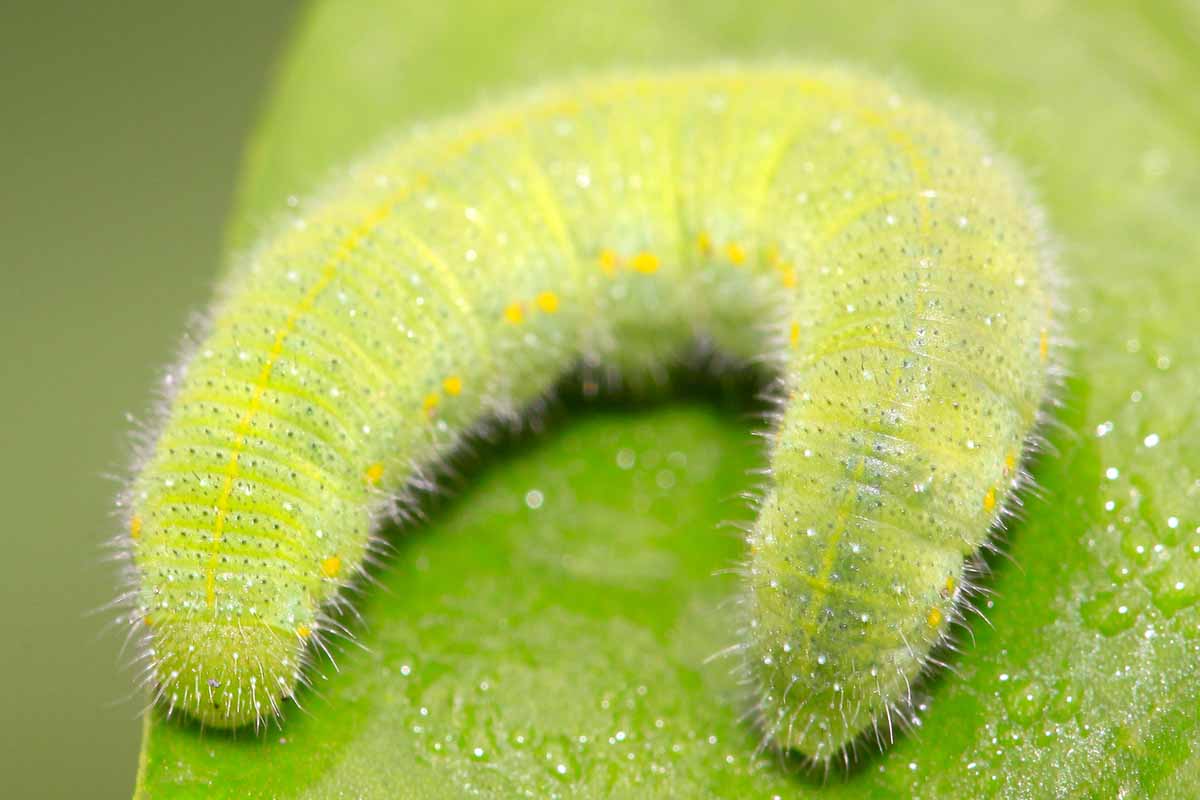
Diamondback moth larvae consume bok choy plants throughout their life cycle, but feeding causes the most damage during the seedling and harvest stages.
The larvae attack the growing points of juvenile plants and the undersides of mature leaves, which stunts growth and reduces yields.
Notable signs of an infestation are holes in mature foliage, and larval frass on and around the plant.
A wide variety of parasitic and predatory insects feed on this pest, so placing an assortment of flowering insectary plants which produce nectar and pollen nearby – such as cilantro, sunflowers, and asters – will encourage the presence of these critters.
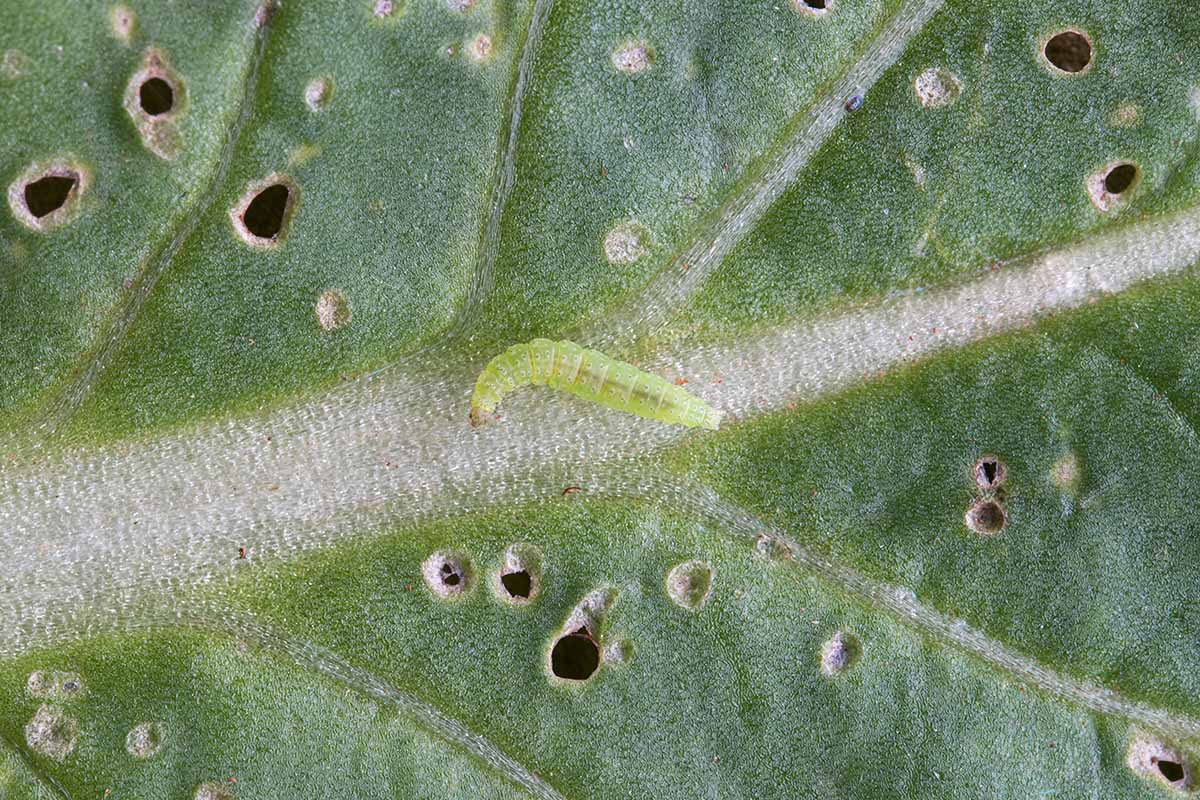
Additionally, rotating out bok choy with non-cole crops each year will keep these pests guessing, so to speak, and make damage less likely in successive seasons.
Unlike broad-spectrum insecticides, applications of Bt or Spinosad can be used to control diamondback moths without harming beneficial insect populations.
6. Flea Beetles
Named for their flea-like ability to jump long distances, flea beetles are members of the leaf beetle family, i.e. the Chrysomelidae.
Most are pretty small – measuring one-sixteenth to one-eighth of an inch long at maturity – and all have large back legs that propel them ridiculously large distances. Take Blepharida sacra, for instance: it can jump about 100 times its body length!

Overwintering in nearby leaf litter, hedgerows, and wooded areas, adult flea beetles “spring” into action once winter ends to feed on leaves, leaving behind their calling card in the foliage: shallow pits and small, irregular holes about an eighth of an inch across.
In the soil or on nearby plants, adult females lay white to yellowish-gray eggs in late spring, either singly or in clusters. From these eggs hatch small white larvae, which feed on plant roots.
All of this damage culminates in reduced vigor, stunted growth, and decreased crop marketability, so it’s important to monitor your crops for flea beetle activity and damage.

Yellow sticky traps – such as this 20-pack of six-by-eight-inch traps available on Amazon – can reveal an infestation in your garden.
Controlling weeds and removing fallen plant detritus can limit overwintering sites and food sources for flea beetles.
Row covers placed during the seedling stage will provide some much-needed protection, and nearby trap crops such as radish will draw the pests away from your bok choy.
Adult plants can withstand damage much more effectively than young ones, so definitely prioritize protecting your juvenile crops.
For supplemental flea beetle info, take a look at this guide.
7. Slugs and Snails
Both slugs and snails are members of the mollusk phylum, while the former lacks the latter’s protective shell.
These pests glide along on a mucus-secreting muscular foot, which leaves behind silvery slime trails as indicators of their presence. Slugs and snails don’t like sunlight, so they tend to be most active on overcast or foggy days, as well as at night.
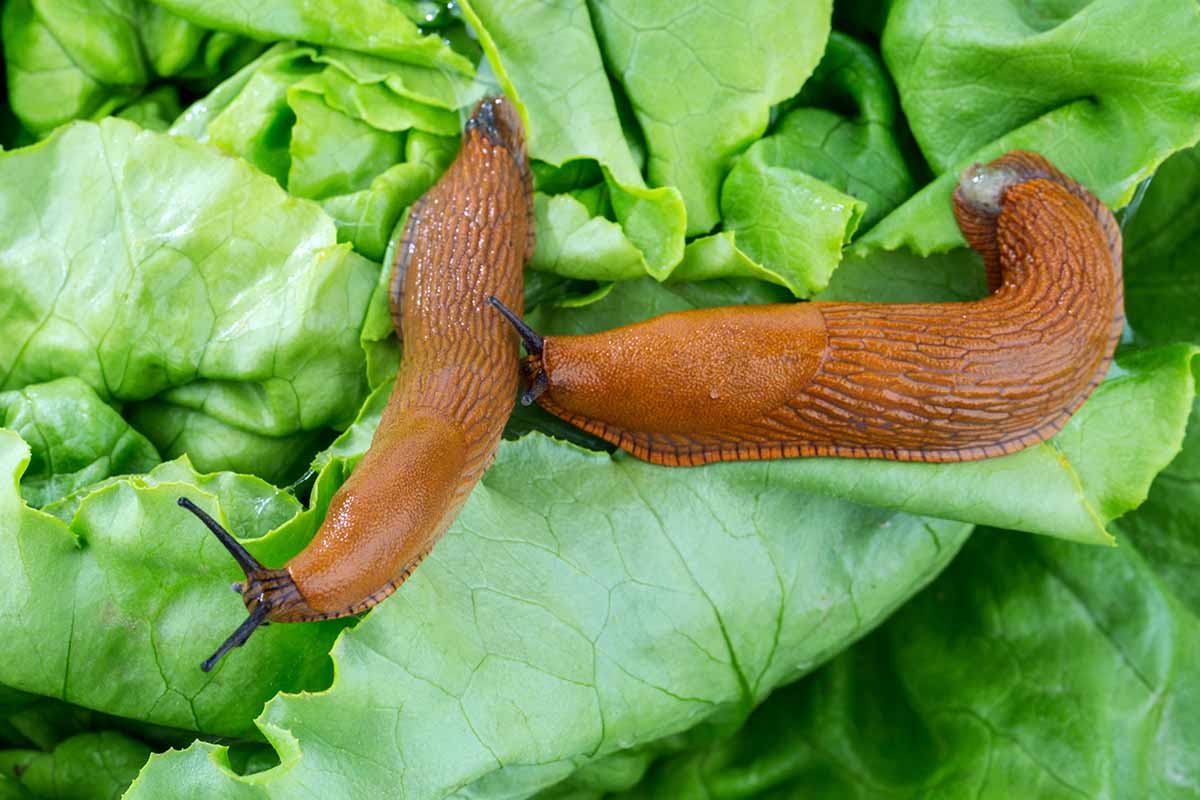
With their roughly-textured tongues, they feed on leaves and leave behind irregularly-shaped, yet smoothly-edged holes, which hinder plant photosynthesis and overall growth.
This particular feeding symptom and nearby slime trails are both dead giveaways for slug and/or snail infestations in the garden.
With the help of your trusty flashlight, snails and slugs can be hand-picked off of plants at night, sealed in plastic bags, and disposed of.
It’s really important to modify the nearby habitat so that slugs and snails can’t hide easily.
Debris, large weeds, stones – keep them all away from your bok choy plantings. Place traps near unmovable shelters such as decks and beloved plantings, to capture these pests when they come out to feed.
Gardener’s Supply sells a three-pack of plastic slug and snail traps.
They work by containing a bit of fermented liquid such as beer to attract and then drown these pests, so pour out a cold one – literally – to the success of your bok choy!
For more information on dealing with slugs and snails, check out our guide.
8. Vegetable Weevils
Also known as Listroderes difficilis, vegetable weevils are grayish-brown beetles a third of an inch in length as adults, while the larvae are legless, black-headed grubs that start out a creamy-white color, then grow to about half an inch in length, and develop a yellowish-green hue as they feed on foliage.

The adult females lay eggs from fall to spring on leaf petioles, near plant crowns, or in nearby soil.
Both adults and larvae feed on leaves, but the majority of damage occurs when the developing tissue is fed upon, stunting growth. Along with said growth reduction, holes in the foliage are a primary symptom of infestation.
Covering vulnerable crops with cloth works for prevention, as well as managing nearby weeds, rotating bok choy with less susceptible crops, and tilling up the soil after harvest.
For direct control, removing them by hand at night works, along with applying neem oil or insecticidal soap.
9. Whiteflies
Remember those aphids from earlier? Well, whiteflies are their winged, soft-bodied, white-powdered, triangle-shaped, and quite annoying relatives.
The group of pests known commonly as whiteflies consists of many different species, but sweet potato whiteflies (Bemisia tabaci) and silverleaf whiteflies (B. argentifolii) are the ones known to commonly afflict bok choy.

In late spring, female whiteflies lay eggs on the undersides of foliage, out of which hatch whitefly nymphs that travel the plant in search of a desirable leaf vein from which to feed.
Like aphids, they feed with their sucking mouthparts, and can oftentimes vector plant pathogens while they do so.
By sucking essential nutrients and moisture from the plant, the vigor and size of the bok choy is often reduced. Additionally, whiteflies excrete honeydew, which can lead to sooty mold infection.
Ladybug and lacewing larvae are both effective in controlling whiteflies, along with applications of neem oil or insecticidal soap. Controlling weeds helps to reduce nearby whitefly populations, along with removing any surrounding plant detritus.
In need of neem oil? Bonide offers the stuff in various bottle sizes via Arbico Organics.
For additional tips on dealing with whiteflies, read this guide.
Oh, Boy… You’re Free to Enjoy Your Bok Choy!
Now that you have some pest management strategies under your belt, you can relish in this delicious vegetable, sans holes and insect dung. Tasty!
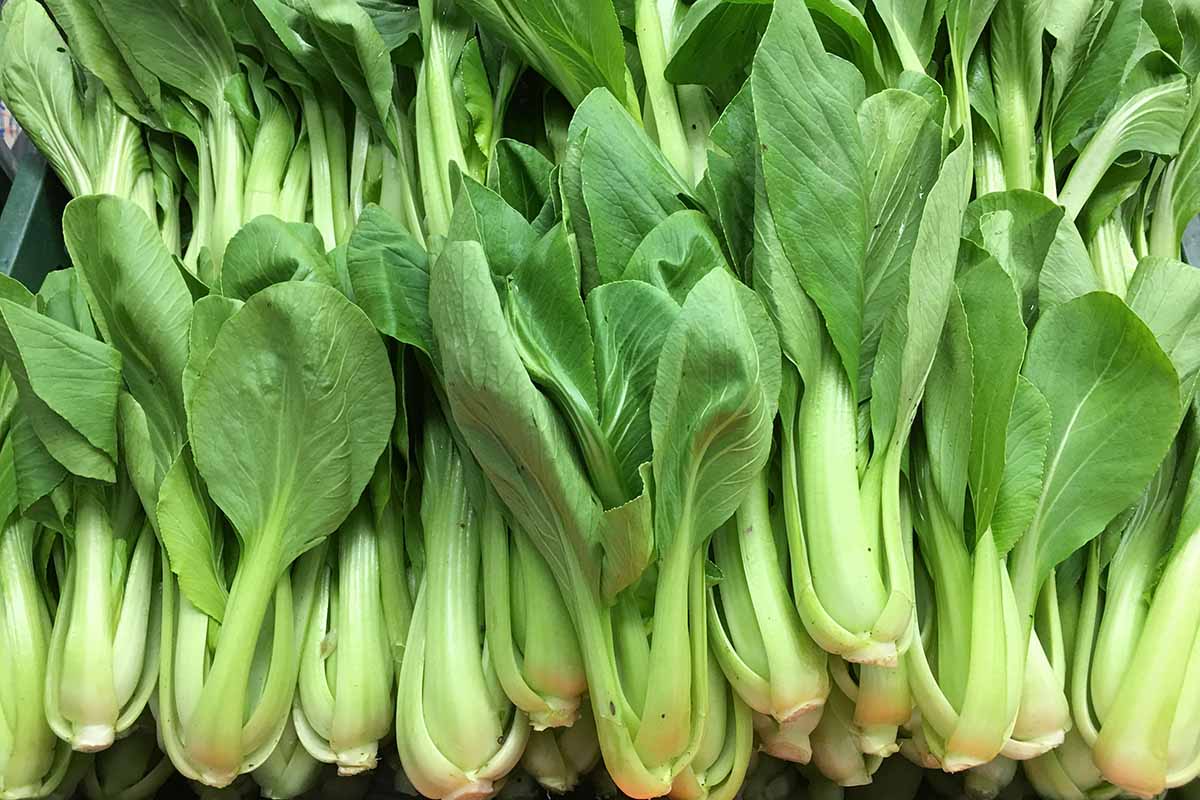
With the tactical knowledge that comes with “knowing thy enemy,” your time spent warding pests away from this crop should be much easier and more effective.
Many of these strategies work for protecting other plants as well, so by giving your bok choy a boost, you’ll be defending your entire garden more effectively.
Any comments, questions, or personal and “field-tested” experiences in combating these pests can go directly into the comments section below!
If this guide has you salivating for some bok choy, sate your cravings with these guides next:
